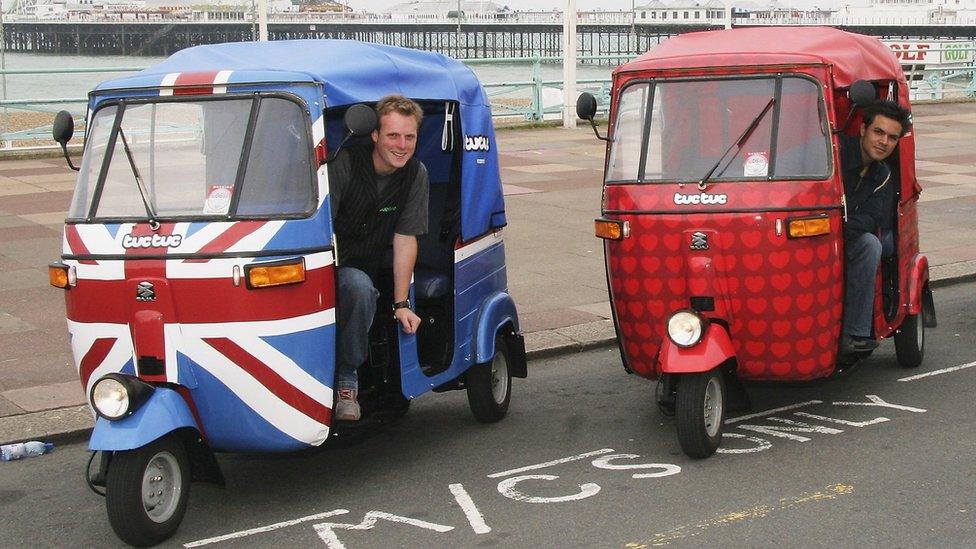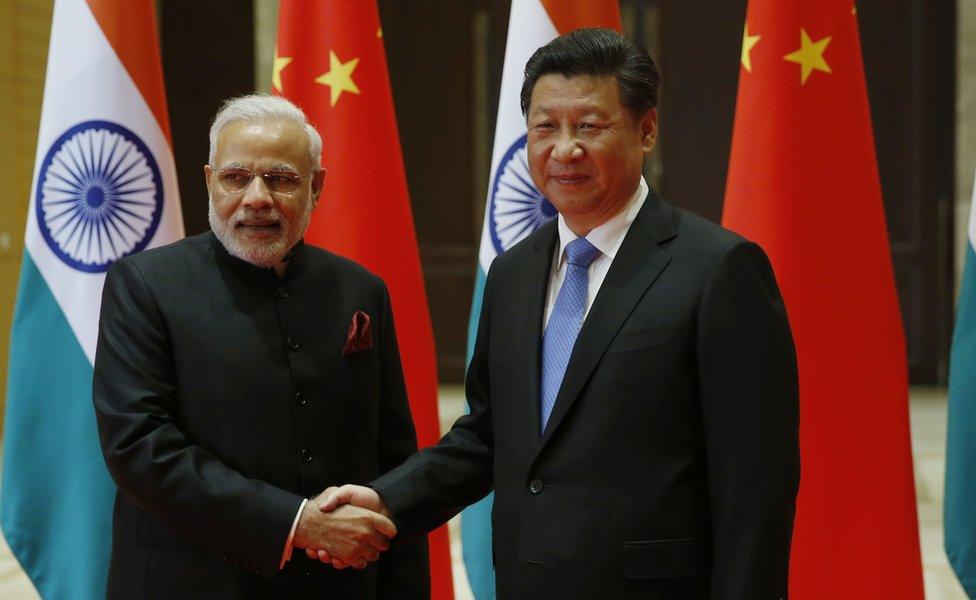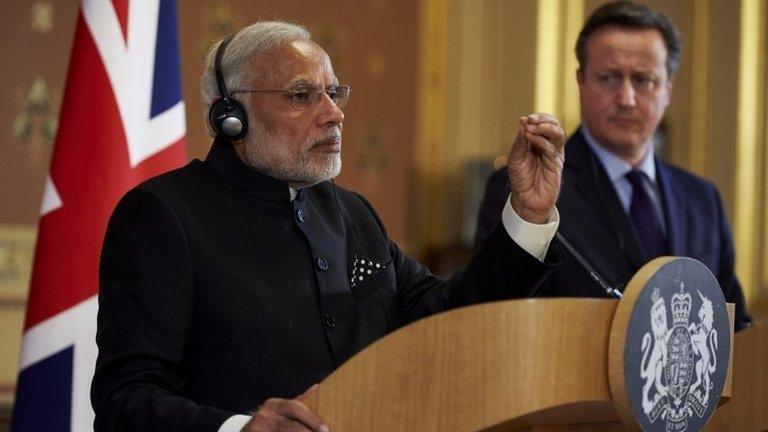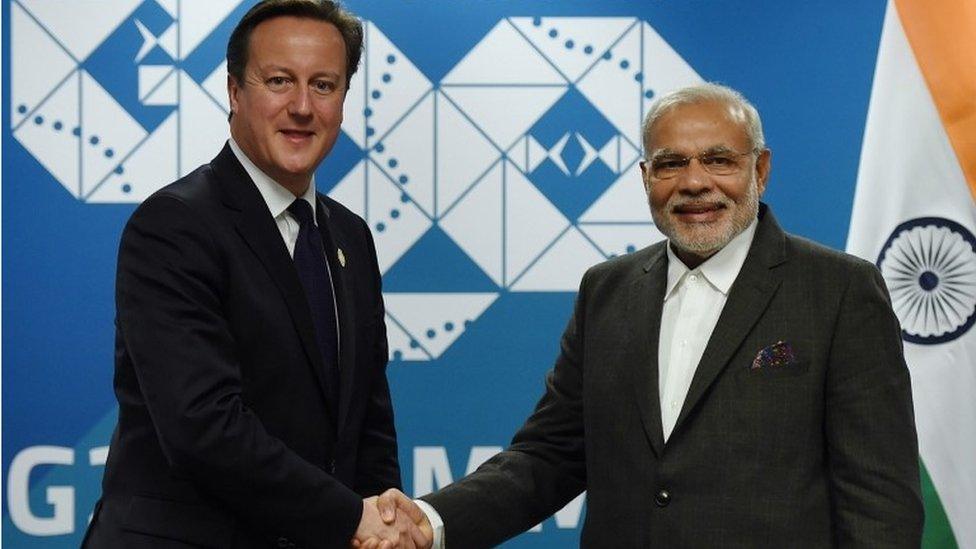The links between the UK and India
- Published

As Indian Prime Minister Narendra Modi arrives in the UK for an official visit, Rob Lynes, director of the British Council in India, looks at the links between the two countries.

What is the current state of economic ties between the UK and India?
The UK-India relationship is strong, with a shared history going back centuries, and now a shared vision of the future.
Since 2010, UK Prime Minister David Cameron has visited India three times, and the UK diplomatic network in India is now the largest in the world.
Investment in each other's countries has grown, and there has been a renewed energy in collaborations.
The UK is the third largest source of foreign direct investment in India. And India is the third largest source of FDI (in terms of the number of projects) in the UK, after the US and France.
The UK imports more and more from India, though the level of its exports to the country has recently begun to stutter after several years of growth.


Indian companies are playing an increasingly important role in the UK economy.
Tata Group, for example, is one of the UK's largest manufacturing employers, with some 65,000 employees in the UK.
Remittances from the UK to India are high.
While it is difficult to know the exact level, a 2013 report in the Guardian, based on World Bank data, external, suggested remittances from the UK to India, including unrecorded transfers through formal and informal channels, could be worth up to $3.9bn (£2.6bn).
More than 21,000 students from India study in the UK and there has been an increase in Chevening, external and other scholarships for Indian students.
New initiatives in science and education such as the Newton-Bhabha Fund, external and an increase in research collaboration from £1m to £150m all add to a strengthening of the relationship and growth in trade.

Where does the UK stand in terms of India's international partnerships?
Since India's government made a significant shift in the early 1990s to liberalise and internationalise its economy, external, which led to a period of growth that continues today, the UK has steadily faced increased international competition for its attention.
Fifteen years ago, the UK was India's third biggest trading partner; today it is its 12th, external.

China is now India's biggest trading partner
Mr Modi has already travelled to 27 countries in his first 18 months in office, developing relationships and signing new agreements.
With its "Look East" policy, India's attention has also shifted to Japan, Korea and China, which is now India's biggest trading partner - Mr Modi's China visit this year yielded $22bn worth of deals.
And just last month, India hosted a major summit of 50 African leaders, as they look to improve ties and trade with that continent.
Meanwhile, young Indians are increasingly turning to the US, Australia and Germany for educational, employment and investment opportunities.

What role does the Indian diaspora play in the relationship between the two countries?
The UK and India have more than 200 years of shared history, strong democracies, connected cultural institutions and the English language.
The Indian diaspora, which totals about 1.5 million people and is the largest ethnic minority group in the UK, has a very important role to play in helping to strengthen the links between our two countries.
It is the seventh greatest Indian diaspora in the world and is well represented across all walks of life in the UK. The achievements cross everything from business to sport, and science and politics.

Former England cricketer Monty Panesar was born in Luton - his parents migrated there from Punjab, India
They act not only as a bridge between the UK and India, but help enrich the UK through Indian culture.
It is important the UK engages more with the diaspora to develop the relationship for mutual benefit.
A recently published British Council survey and report, India Matters,, external indicated young Indians still felt they had a good understanding of the UK, and were attracted to the country - especially its culture.
Young middle-class Indians were asked to rank the overall attractiveness of the 15 biggest economies, and the UK came second, behind the US.
And with the right opportunity, people in the UK are interested in India - the British Council launched the Generation UK-India programme last year for short-term study and work placements in India, and it has had more than 4,000 applications already from young people who want to go.
Therefore, the UK has to have a long-term, holistic approach to India, where it really pushes educational and cultural ties and uses them to future-proof the UK-India relationship.

- Published12 November 2015

- Published12 November 2015

- Published12 November 2015
- Published11 November 2015